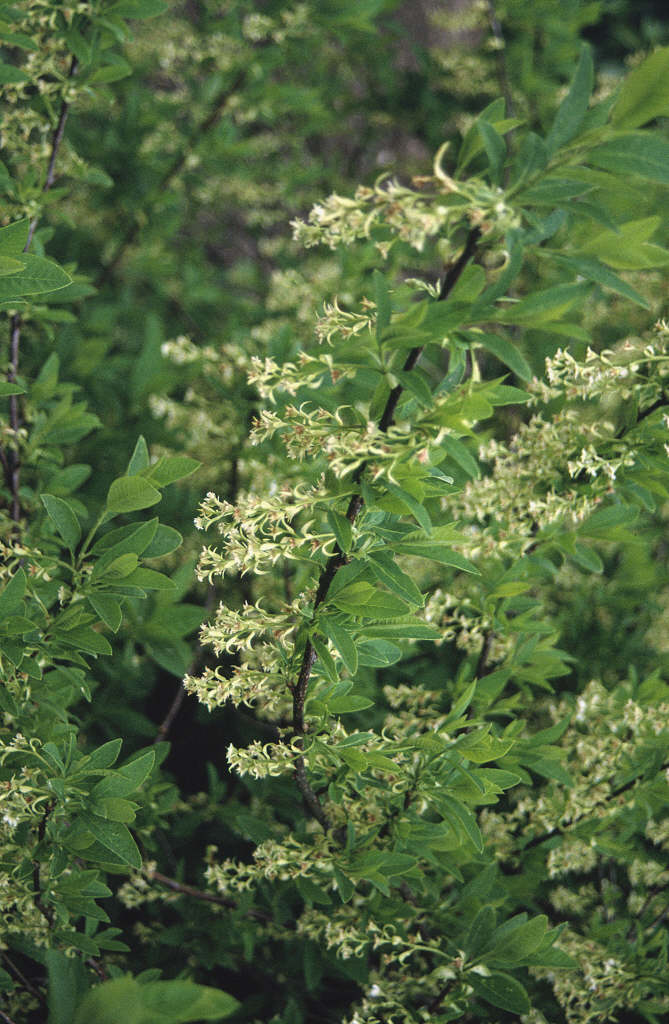Oemleria cerasiformis
oso berry
Forms a dense thicket of erect stems to 2.5m tall, with pale green leaves and small white flowers, male and female on separate plants

Buy this plant
Size
Ultimate height
1.5–2.5 metresTime to ultimate height
5–10 yearsUltimate spread
1.5–2.5 metresGrowing conditions
Moisture
Moist but well–drainedpH
Acid, Alkaline, NeutralColour & scent
| Stem | Flower | Foliage | Fruit | |
| Spring | White | Green | ||
|---|---|---|---|---|
| Summer | Green | Purple | ||
| Autumn | ||||
| Winter |
Position
- Full sun
- Partial shade
Aspect
South–facing or North–facing or West–facing or East–facing
Exposure
Exposed or Sheltered Hardiness
H7Botanical details
- Family
- Rosaceae
- Native to GB / Ireland
- No
- Foliage
- Deciduous
- Habit
- Suckering
- Genus
Oemleria are suckering deciduous shrubs with lance-shaped leaves and drooping racemes of small flowers opening before the leaves in early spring, followed on female plants by plum-like purple fruits
- Name status
Correct
- Plant range
- W North America
How to grow
Cultivation
Grow in fertile, moist but well-drained soil in sun or partial shade. In moist soil, plants may sucker extensively; remove excess suckers to restrict growth
Propagation
Propagate by seed as soon as ripe, take greenwood or softwood cuttings in early summer. Transplant suckers in early autumn
Suggested planting locations and garden types
- City and courtyard gardens
- Coastal
- Cottage and informal garden
- Hedging and screens
- Flower borders and beds
Pruning
Pests
Generally pest-free
Diseases
May become chlorotic in shallow, chalky soil
Love gardening
Sign up to receive regular gardening tips, inspiration, offers and more
View our Privacy Policy
Get involved
The Royal Horticultural Society is the UK’s leading gardening charity. We aim to enrich everyone’s life through plants, and make the UK a greener and more beautiful place.